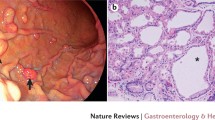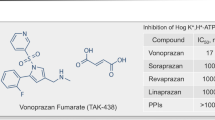Abstract
The proton pump inhibitors are a very effective drug group for the control of gastric acid secretion, which makes them of great use in the medical practice setting, while at the same time they represent one of the treatment groups widely used in Western European countries. These factors lead to this drug group being prescribed in all age populations, quite often in polimeticated patients and with pluripathology, and on many occasions during prolonged periods of time. All these determinant factors sometimes make the safety profile of proton pump inhibitors disputable. In this respect all of them have been shown to have little adverse events and are safe in long-term treatment. The risk of drug interactions when prescribed in association with other drugs is low and their repercussion in the medical practice setting is quite exceptional as they require few dosage adjustments in patients with severe concomitant diseases and in elderly patients. Finally, their safety is high in pregnant women and in children, although further studies in this population are required to corroborate this evidence.






Similar content being viewed by others
References
Grupos terapéuticos y principios activos de mayor consumo en el Sistema Nacional de Salud durante 2003. Información Terapéutica de la Seguridad Social 2004; 28: 121–4.
Andersson T, Cederberg C, Edvarsson G, et al. Effect of omeprazole treatment on diazepam plasma levels in slow versus normal rapid metabolizers of omeprazole. Clin Pharmacol Ther 1990; 47: 79–85
Thjodleifsson B. Treatment of acid-related diseases in the elderly with emphasis on the use of proton pump inhibitors. Drugs Ageing 2002; 19: 911–27
Horai Y, Ishizaki T. Pharmacogenetics and its clinical implications. Part II. Oxidation polymorphism. Ration Drug Ther 1988; 22: 1–8
Küpfer A, Preisig R. Pharmacogenetics of mephenytoin: a new drug hydroxylation polymorphism in man. Eur J Clin Pharmacol 1984; 26: 753–9
Bertilsson I. Geographic/interracial differences in polymorphic drug oxidation. Current state of knowledge of cytochromes P450 (CYP) 2D6 and 2C 19. Clin Pharmacokinet 1995; 29: 192–209
Ishizaki T, Horai Y. Cytochrome P450 and the metabolism of proton pump inhibitors-emphasis on rabeprazole. Aliment Pharmacol Ther 1999; 13: 27–36
Andersson T. Pharmacokinetics, metabolism and interac-tions of acid pump inhibitors. Focus on omeprazole, lansoprazole and pantoprazole. Clin Pharmacokinet 1996; 31: 9–28
Andersson T, Holmberg J, Rösh K, et al. Pharmacokinetics and effect on caffeine metabolism of the proton pump inhibitors, omeprazole, lansoprazole, and pantoprazole. Br J Clin Pharmacol 1998; 45: 369–75
Humphries TJ, Merrit GJ. Review article: drug interactions with agents used to treat acid-related diseases. Aliment Pharmacol Ther 1999; 13 Suppl 3: 18–26
Caraco Y, Tateishi T, Wood AJ. Interethnic difference in omperazole’s inhibition of diazepam metabolism. Clin Pharmacol Ther 1995; 58: 62–72
Andersson T, Andren K, Cederberg C, et al. Effect of omeprazole and cimetidine on plasma diazepam levels. Eur J Clin Pharmacol 1990; 39: 51–4
Li G, Klotz U. Inhibitory effect of omeprazole on the metabolism of midazolam in vitro. Arzneimittelforschung 1990; 40: 1105–7
Marti-Masso JF, Lopez de Munain A, Lopez de Dicastillo G. Ataxia following gastric bleeding due to omeprazole-benzodiazepine interaction. Ann Pharmacother 1992; 26: 429–30
Prichard PJ, Walt RP, Kitchingman GK, et al. Oral pheny-toin pharmacokinetics during omeprazole therapy. Br J Clin Pharmacol 1987; 24: 543–5
Gugler R, Jensen JC. Omeprazole inhibits oxidative drug metabolism. Studies with diazepam and phenytoin in vivo and 7-ethoxycoumarin in vitro. Gastroenterology 1985; 89: 1235–41
Andersson T, Lagerstrom PO, Unge P. A study of the interaction between omeprazole and phenytoin in epileptic patients. Ther Drug Monit 1990; 12: 329–33
Ahmad S. Omeprazole—warfarin interaction. South Med J 1991; 84: 674–5
Suftin T, Balmer K, Bostrom H, et al. Stereoselective interaction of omeprazole with warfarin in healthy men. Ther Drug Monit 1989; 11: 176–84
de Hoon JN, Thujssen HH, Beysens AJ, et al. No effect of short-term omeprazole intake on acenocoumarol pharmacokinetics and pharmacodynamics. Br J Clin Pharmacol 1997; 44: 399–401
Unge P, Svedberg LE, Nordgren A, et al. A study of the interaction of omeprazole and warfarin in anticoagulated patients. Br J Clin Pharmacol 1992; 34: 509–12
Bottiger Y, Tybring G, Gotharson E, et al. Inhibition of the sulfoxidation of omeprazole by ketoconazole in poor and extensive metabolizers of S-mephenytoin. Clin Pharmacol Ther 1997; 62: 384–91
Furuta T, Ohashi K, Kobayashi K, et al. Effects of clarithromycin on the metabolism of omeprazole in relation to CYP2C19 genotype status in humans. Clin Pharmacol Ther 1999; 66: 265–74
Oosterhuis B, Jonkman JH, Andersson T, et al. Minor effect of multiple dose omeprazole on the pharmacokinetics of digoxin after single oral dose. Br J Clin Pharmacol 1991; 32: 569–72
Soons PA, van der Berg G, Danhof M, et al. Influence of single- and multiple-dose omeprazole treatment on nife-dipine pharmacokinetics and effects in healthy subjects. Eur J Clin Pharmacol 1992; 42: 319–24
Lefevre RA, Flouvat B, Karolac-Tamisier S, et al. Influence of lansoprazole treatment on diazepam plasma concentrations. Clin Pharmacol Ther 1992; 52: 458–63
Ko JW, Jang U, Shin JG, et al. Theophyline pharmacokinetics are not altered by lansoprazole in CYP2C19 poor metabolizers. Clin Pharmacol Ther 1999; 65: 606–14
Karol MD, Locke CS, Cavanaugh JH. Lack of pharmaco-kinetic interaction between lansoprazole and intravenously administered phenytoin. J Clin Pharmacol 1999; 39: 1283–9
Braeckman RA, Winters EP, Cohen A, et al. Lack of effect of lansoprazole on warfarin pharmacokinetics and anti-coagulation effect in healthy subjects. Pharmacol Res 1991; 8 Suppl 10: s295
Gerson LB, Triadafilopoulos. Proton pump inhibitors and their drug interactions: an evidence-base approach. Eur J Gastroenterol Hepatol 2001; 13: 611–6
Andersson T, Hassan-Alin M, Hasselgren G, et al. Drug interaction studies with esomeprazole, the (S)-isomer of omeprazole. Clin Pharmacokinet 2001; 40: 523–37
Humphries T. A review on the drug—drug interaction potential of rabeprazole sodium based on CYP-450 interference or absorption effects. Digestion 1998; 59 Suppl 3: 76
Humphries TJ, Nardi RV, Spera AC, et al. Coadministration of rabeprazole sodium (E-3810) and ketoconazole results in a predictable interaction with ketoconazole. Gastroenterology 1996; 110: A138
Labenz J, Petersen KU, Rösch W, et al. A summary of Food and Drug Administration-reported adverse events and drug interactions occurring during therapy with omeprazole, lansoprazole and pantoprazole. Aliment Pharmacol Ther 2003; 17: 1015–9
Keane WF, Swan SK, Grimes I, et al. Rabeprazole: pharmacokinetics and tolerability in patients with stable, end-stage renal failure. J Clin Pharmacol 1999; 39: 927–33
Huber R, Hartmann M, Bliesath H, et al. Pharmacokinetics of pantoprazole in man. Int J Clin Pharmacol Ther 1996; 34: 185–94
Flouvat B, Delhotal-Landers B, Cournot A, et al. Single and multiple dose pharmacokinetics of lansoprazole in elderly subjects. Br J Clin Pharmacol 1993; 36: 467–9
Whitaker M. Proton pump inhibitors in the elderly population. Eur J Gastroenterol Hepatol 2002; 14 Suppl 1: S5–9
Hasselgren G, Hassan-Alin M, Andersson T, et al. Pharma-cokinetic study of esomeprazole in the elderly. Clin Pharmacokinet 2001; 40: 145–50
Irl C, Kipferler P, Hasford J. Drug use assessment and evaluation in pregnancy — the Pegasus project. Pharma-coepidemiol Drug Saf 1997; 6 Suppl 3: S37–42
Capell MS, García A. Gastric and duodenal ulcers during pregnancy. Gastroenterol Clin North Am 1998; 27: 169–95
Charan M, Katz PO. Gastroesophageal reflux disease in pregnancy. Curr Treat Options Gastroenterol 2001; 4: 73–81
Ching MS, Morgan DJ, Mihaly GW, et al. Placental transfer of omeprazole in maternal and fetal sheep. Dev Pharmacol Ther 1986; 9: 323–31
Nifkar S, Abdollahi M, Moretti ME, et al. Use of proton pump inhibitors during pregnancy and rates of major malformations. A meta-analysis. Dig Dis Sci 2002; 47: 1526–9
Martin RM, Dunn NR, Freemantle S, et al. The rates of common adverse events reported during treatment with proton pump inhibitors used in general practice in England: cohort studies. Br J Clin Pharmacol 2000; 50: 366–72
García Rodriguez LA, Mannino S, Wallander MA, et al. A cohort study of the ocular safety of anti-ulcer drugs. Br J Clin Pharmacol 1996; 42: 213–6
Freston JW. Clinical significance of hypergasrinemia: relevance to gastrin monitoring during omeprazole therapy. Digestion 1992; 51 Suppl 1: 102–14
Koop H, Arnold R. Long-term maintenance treatment of reflux esophagitis with omeprazole. Prospective study in patients with H2-blocker-resistant esophagitis. Dig Dis Sci 1991; 36: 552–7
Mattsson H, Havu N, Bräutigam J, et al. Partial gastric corpectomy results in hypergastrinemia and development of gastric enterochromaffin-like cell carcinoids in the rat. Gastroenterology 1991; 100: 311–9
Solcia E, Fiocca R, Villani L, et al. Hyperplastic, dysplastic, and neoplastic enterochromaffin-like-cell proliferations of the gastric mucosa. Classification and histogenesis. Am J Surg Pathol 1995; 19 Suppl 1: S1–7
Kuipers EJ, Lundell L, Klinkenberg-Knol EC, et al. Atrophic gastritis and H.pylori infection in patients with reflux esophagitis treated with omeprazole or fundoplication. N Engl J Med 1996; 334: 1018–22
Lundell L, Miettinen P, Myrvold HE, et al. Lack of effect of acid suppression therapy on gastric atrophy. Nordic GERD Study Group. Gastroenterology 1999; 117: 319–26
Klinkenberg-Knol EC, Nelis F, Dent J, et al. Long-term omeprazole treatment in resistant gastroesophageal reflux disease: efficacy, safety, and influence on gastric mucosa. Gastroenterology 2000; 118: 661–9
Verdu E, Viani F, Armstrong D, et al. Effect of omeprazole on intragastric bacterial counts, nitrates, nitrites, and N-nitroso compounds. Gut 1994; 35: 455–60
García Rodriguez LA, Ruizgomez A. Gastric acid, acid-suppressing drugs, and bacterial gastroenteritis: how much of a risk. Epidemiology 1997; 8: 571–4
Allen RH, Seetharam B, Podell E, et al. Effect of proteolytic enzymes on the binding of cobalamin to R protein and intrinsic factor. J Clin Invest 1978; 61: 47–54
Marcuard SP, Albernarz L, Khazanie PG. Omeprazole therapy causes malabsorption of cyanocobalamin (vitamin B12). Ann Intern Med 1994; 120: 211–5
Gibbons TE, Gold BD. The use of proton pump inhibitors in children: a comprehensive review. Paediatr Drugs 2003; 5: 25–40
Henry D, Brent P, White I, et al. Propanolol steady-state pharmacokinetics are unaltered by omeprazole. Eur J Clin Pharmacol 1987; 33: 369–73
Dilger K, Zheng Z, Klotz U. Lack of drug interaction between omeprazole, lansoprazole, pantoprazole and theophyline. Br J Clin Pharmacol 1999; 48: 438–44
Ching MS, Elliott SL, Stead CK, et al. Quinidine single dose pharmacokinetics and pharmacodynamics are unaltered by omeprazole. Aliment Pharmacol Ther 1991; 5: 523–31
Blohme I, Idstrom JP, Andersson T. A study of the interaction between omeprazole and cyclosporine in renal transplant patients. Br J Clin Pharmacol 1993; 35: 156–60
Itagaki F, Homma M, Yuzawa K, et al. Drug interaction of tacrolimus and proton pump inhibitors in renal transplant recipients with CYP2C19 gene mutation. Trans Proc 2002; 34: 2777–8
Gugler R, Hartmann M, Rudi J, et al. Lack of pharmacokinetic interaction of pantoprazole with diazepam in man. Br J Clin Pharmacol 1996; 42: 249–52
Middle MW, Müller FO, Schall R, et al. No influence of pantoprazole on the pharmacokinetics of phenytoin. Int J Clin Pharmacol Ther 1996; 34 Suppl 1: S72–5
Duursema L, Müller FO, Schall R, et al. Lack of effect of pantoprazole on the pharmacodynamics and pharmacokinetics of warfarin. Br J Clin Pharmacol 1995; 39: 700–3
Schulz HU, Hartmann M, Steinijans VW, et al. Lack of influence of pantoprazole on the disposition kinetics of theophyline in man. Int J Clin Pharmacol Ther 1996; 34 Suppl 1: S51–7
Bliesath H, Huber R, Steinijans VW, et al. Pantoprazole does not interact with nifedipine in man under steady-state conditions. Int J Clin Pharmacol Ther 1996; 34: 51–5
Ishizaki T, Chiba K, Manabe K, et al. Comparison of the interaction potential of a new proton pump inhibitor, E3810, versus omeprazole with diazepam in extensive and poor metabolizers of S-mephenytoin 4′-hydroxilation. Clin Pharmacol Ther 1995; 58: 155–64
Author information
Authors and Affiliations
Corresponding author
Rights and permissions
About this article
Cite this article
de Argila de Prados, C.M. Safety of Potent Gastric Acid Inhibition. Drugs 65 (Suppl 1), 97–104 (2005). https://doi.org/10.2165/00003495-200565001-00013
Published:
Issue Date:
DOI: https://doi.org/10.2165/00003495-200565001-00013




